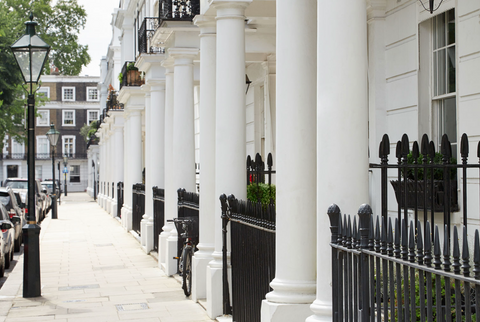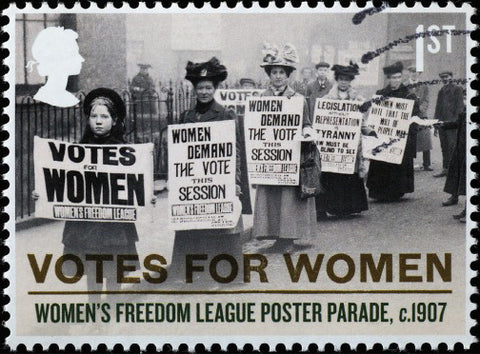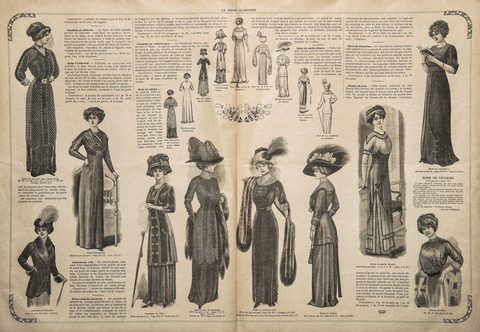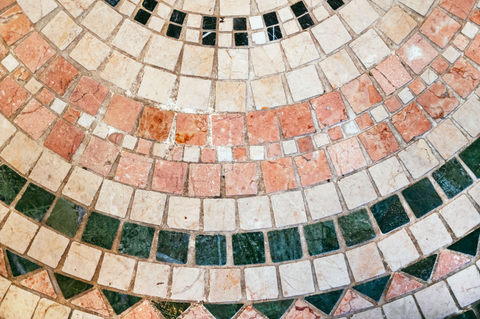The Edwardian Era 1901-1910
Queen Victoria, who had been the longest-reigning monarch in British history, died on January 22, 1901, at the age of 81. Her death marked the end of the Victorian era, a period of significant social and economic change in Britain.

Upon Victoria's death, her son, Prince Edward, who had been serving as the Prince of Wales, ascended to the throne as King Edward VII. Edward had been waiting to take the throne for many years and was eager to take on the role of king. He was known for his love of socializing and entertaining, and his reign was marked by a focus on diplomacy and improving relations with other European powers.
Edward's coronation was held on August 9, 1902, and was a grand and elaborate affair, attended by many foreign dignitaries and members of the royal family. The coronation was seen as an opportunity for Edward to establish his own style of monarchy and distance himself from his mother's more conservative reign.
Under Edward's reign, Britain continued to experience significant social and economic change, including the rise of the suffragette movement and the increasing influence of labour unions. Edward himself was seen as a modern and progressive monarch, and his reign was marked by a focus on social reform and improving the lives of ordinary people.
However, Edward's reign was cut short by his death in 1910 at the age of 68. He was succeeded by his son, George V, who would go on to lead Britain through World War I and the tumultuous years that followed.
Edwardian Architecture
The Edwardian period in architecture is generally considered to be from 1900 to 1914, although some architectural historians extend it to the start of World War I.
During the Edwardian period, many architectural styles were popular, including those that had originated in other countries such as the Netherlands and France. In addition, there was a move away from the highly ornate and decorative styles of the Victorian era towards simpler designs. This was partly due to changes in taste and partly due to new methods of construction which made elaborate decoration more expensive.

A number of different architects influenced Edwardian architecture. Among them were Ernest George and Harold Peto, who designed several country houses in the Arts and Crafts style; Edwin Lutyens, who designed both country houses and urban buildings; and Sir Aston Webb, who redesigned Buckingham Palace and the London offices of The Times newspaper.
Suffragette Movement
The Edwardian suffragette movement was a pivotal time in the history of women's rights. During the early 1900s, women in England and other countries were fighting tirelessly for the right to vote, equal pay, and other important rights. The term "suffragette" referred to women who were actively organizing and protesting to promote women's rights.

The movement, which was led by women such as Emmeline Pankhurst, attracted both praise and criticism from different sectors of society. Ultimately, their efforts helped pave the way for greater equality and opportunity for women around the world.
Suffragette Jewellery was a type of political jewellery worn in the early 20th century by women who supported the women's right to vote movement, also known as suffrage. The jewellery often featured green, white, and violet stones, known as the suffrage colours, which stood for "Give Women Votes." The use of these three colours, green for hope, white for purity, and violet for dignity, helped express the movement's ideals of peace, purity, and hope. Suffragette jewellery was designed to be worn by women in public, representing a statement about alternative forms of femininity and gender, challenging the norms of their society, it was highly sought after and considered a valuable manner of support.
Nellie Godfrey was a prominent suffragist and women's rights activist in Britain in the early 20th century. She was a member of the Women's Social and Political Union (WSPU), which was one of the leading organisations campaigning for the right of women to vote in the United Kingdom. Godfrey was a tireless campaigner, organizsng protests and demonstrations, speaking at public rallies, and engaging in civil disobedience. She was arrested several times for her activism, including a hunger strike in 1909. Despite facing opposition and hostility from many quarters, Godfrey and her fellow suffragists finally achieved their goal in 1918 when the Representation of the People Act granted the right to vote to women over the age of 30.
The Great War
The Great War, also known as World War I, was a global conflict from 1914 to 1918 that involved many of the world's major powers. The war was fought primarily in Europe and resulted in the deaths of millions of soldiers and civilians. It was a very significant event in history that led to major political, social, and economic changes worldwide.
Politics
The Edwardian period in Britain was marked by significant political change, with the Liberals dominating the political landscape. The period saw the introduction of reforms such as the establishment of old age pensions, the introduction of the first nature preservation laws, and the establishment of trade union rights. This era was also marked by international tensions and conflicts, such as the Boer War and the creation of the Entente Cordiale between Britain and France. Overall, the political climate of the Edwardian period reflected a mix of social progress, imperial expansion, and diplomatic complexities.
Imperialism
During the Edwardian era, imperialism was a major factor in politics and society. Britain was at the height of its global power, and had established colonies and territories throughout the world. This included Africa, India, and parts of Southeast Asia. The exploitation of resources and labor from these colonies helped fuel Britain's economic growth and overseas trade. However, this also led to cultural and political tensions, as the colonized peoples struggled for independence and autonomy. Additionally, the notion of "white man's burden" justified the perceived duty of European powers to "civilize" and impose their values on non-white societies.
Edwardian Fashion

- S-bend silhouette: Women wore tight-fitting corsets that pushed their hips back and their chests forward, creating a distinctive S-shaped curve
- High collars: Women's blouses and dresses featured high collars that covered the neck.
- Narrow skirts: Skirts were narrow and often fitted closely to the body, with a slight flare at the hemline.
- Lace and embroidery: Women's clothing was often adorned with delicate lace and intricate embroidery.
- Large hats: Women wore large, elaborate hats that were often decorated with feathers and other embellishments.
- Tailored suits: Men's fashion emphasized a more tailored, structured look, with suits featuring a fitted waist and broad shoulders.
- Ascot ties: Men's neckwear included the ascot tie, which was worn with a wing-collared shirt and a waistcoat.
- White tie: Formal occasions called for men to wear a white tie, which was paired with a tailcoat and striped trousers.
- Bicycling attire: With the rise of the bicycle craze, men and women began wearing specialized clothing for cycling, such as knickerbockers and bloomers.
- Boater hats: Men's summer hats were often the boater
Edwardian Era Arts

The Edwardian era was a time of great artistic and cultural development in Britain. The arts during this period were marked by a mixture of tradition and innovation, as artists and designers looked both to the past and the future for inspiration.
Here are some of the key art forms and movements of the Edwardian era:
Art Nouveau: This was an international style of art and design that flourished in the late 19th and early 20th centuries. It was characterized by flowing, organic forms, inspired by nature, and an emphasis on decorative detail. Some notable Art Nouveau artists of the Edwardian era include Aubrey Beardsley and Charles Rennie Mackintosh.
Post-Impressionism: This was a movement in painting that rejected the naturalism of Impressionism in favor of a more abstract and expressive style. Artists associated with Post-Impressionism include Vincent van Gogh, Paul Cézanne, and Georges Seurat.
Arts and Crafts: This was a movement that celebrated traditional craftsmanship and rejected the mass-produced goods of the Industrial Revolution. It was founded by William Morris, who believed that good design and craftsmanship could improve people's lives. The Arts and Crafts movement had a significant influence on the decorative arts of the Edwardian era.
Beaux-Arts: This was an architectural style that was popular in the United States during the late 19th and early 20th centuries. It was characterized by grand, monumental buildings with classical details and a sense of civic pride. Some notable examples of Beaux-Arts architecture in Britain include the Victoria and Albert Museum and the Royal Albert Hall
Edwardian Baroque: This was a style of architecture that combined elements of Baroque and Renaissance design with a more modern aesthetic. It was characterized by its grandeur and ornamentation, as well as its use of new materials like steel and concrete. The London Underground stations designed by Leslie Green are good examples of Edwardian Baroque architecture.
Overall, the Edwardian era was a time of great creativity and experimentation in the arts, as artists and designers sought to balance tradition with modernity and push the boundaries of what was possible.
Edwardian Jewellery
Edwardian jewellery is known for its intricate designs, delicate filigree work, and use of precious gems such as diamonds, emeralds, and sapphires. The Edwardian era, spanning from 1901 to 1914, was a time of prosperity, refinement, and elegance. Jewellery from this period often features curving lines, floral motifs, and lacy patterns, as well as ornate platinum settings that allow the gems to sparkle and shine. If you're looking for some Edwardian jewellery to add to your collection, please take a look at our unparalleled selection of one-of-a-kind pieces.
Differences Between Victorian and Edwardian jewellery
Victorian and Edwardian eras were distinct periods in history and they had their own unique styles and aesthetics that were reflected in their jewellery designs. Here are some key differences between Victorian and Edwardian jewellery:
Design motifs: Victorian jewellery was characterised by elaborate designs that incorporated natural motifs, such as flowers, leaves, and animals. Edwardian jewellery, on the other hand, featured more delicate and intricate designs with a greater emphasis on geometric and abstract shapes.
Materials: During the Victorian era, jewellery was often made from precious metals like gold and silver, and adorned with precious gemstones like diamonds, sapphires, and rubies. In contrast, Edwardian jewellery often featured lighter materials like platinum, pearls, and diamonds. Platinum, which had only recently been discovered, became increasingly popular in Edwardian jewellery due to its strength and durability.
Styles: Victorian jewellery tended to be more ornate and complex, with heavy layering of gemstones and intricate metalwork. Edwardian jewellery was lighter and more delicate, with simpler, more elegant designs. Edwardian jewellery also featured a greater emphasis on pearls and diamonds, which were seen as symbols of purity and sophistication.
Brooches and pins: Victorian women often wore large, ornate brooches as a way of displaying their wealth and status. Edwardian women, on the other hand, favoured smaller, more delicate pins that could be worn on hats and lapels.
Necklaces: Victorian necklaces were often long and heavy, and featured a mix of gemstones and metals. Edwardian necklaces were shorter and more delicate, often featuring a single, large pendant or a row of smaller diamonds or pearls.
Overall, Victorian jewellery was marked by its elaborate designs and use of heavy, luxurious materials, while Edwardian jewellery was characterized by its lightness, delicacy, and use of more refined materials like platinum and pearls.


